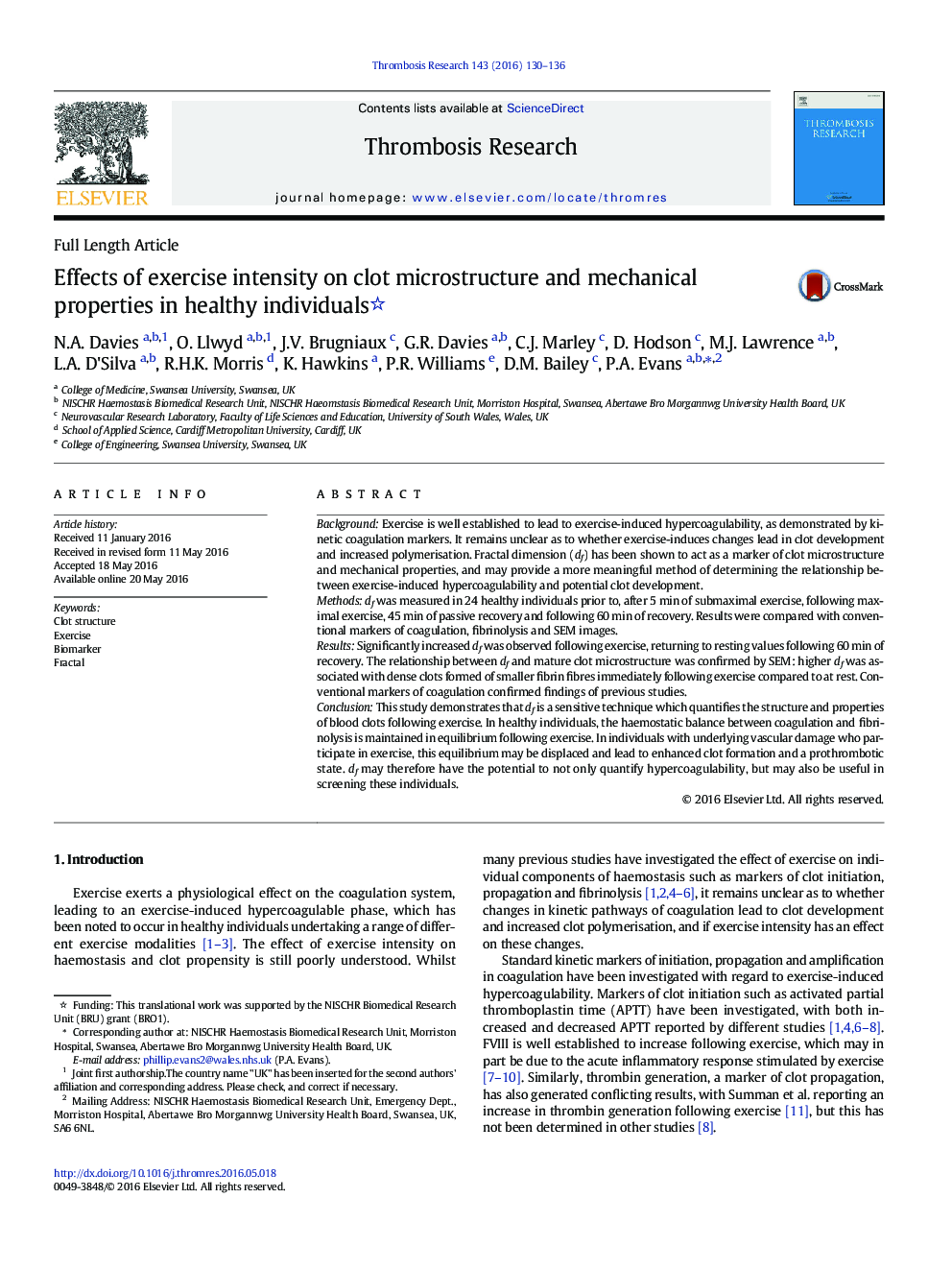| کد مقاله | کد نشریه | سال انتشار | مقاله انگلیسی | نسخه تمام متن |
|---|---|---|---|---|
| 6000417 | 1579200 | 2016 | 7 صفحه PDF | دانلود رایگان |
- Exercise induces a hypercoaguable phase, measured by kinetic markers of coagulation.
- It is not known if exercise induces changes to clot formation and polymerization.
- Fractal dimension (df) is a technique which quantifies incipient clot microstructure.
- Increased df following exercise, suggests altered clot structure & polymerisation.
- Changes in df were associated with increased fibrin mass and cross-linking structure.
BackgroundExercise is well established to lead to exercise-induced hypercoagulability, as demonstrated by kinetic coagulation markers. It remains unclear as to whether exercise-induces changes lead in clot development and increased polymerisation. Fractal dimension (df) has been shown to act as a marker of clot microstructure and mechanical properties, and may provide a more meaningful method of determining the relationship between exercise-induced hypercoagulability and potential clot development.Methodsdf was measured in 24 healthy individuals prior to, after 5Â min of submaximal exercise, following maximal exercise, 45Â min of passive recovery and following 60Â min of recovery. Results were compared with conventional markers of coagulation, fibrinolysis and SEM images.ResultsSignificantly increased df was observed following exercise, returning to resting values following 60Â min of recovery. The relationship between df and mature clot microstructure was confirmed by SEM: higher df was associated with dense clots formed of smaller fibrin fibres immediately following exercise compared to at rest. Conventional markers of coagulation confirmed findings of previous studies.ConclusionThis study demonstrates that df is a sensitive technique which quantifies the structure and properties of blood clots following exercise. In healthy individuals, the haemostatic balance between coagulation and fibrinolysis is maintained in equilibrium following exercise. In individuals with underlying vascular damage who participate in exercise, this equilibrium may be displaced and lead to enhanced clot formation and a prothrombotic state. df may therefore have the potential to not only quantify hypercoagulability, but may also be useful in screening these individuals.
Journal: Thrombosis Research - Volume 143, July 2016, Pages 130-136
